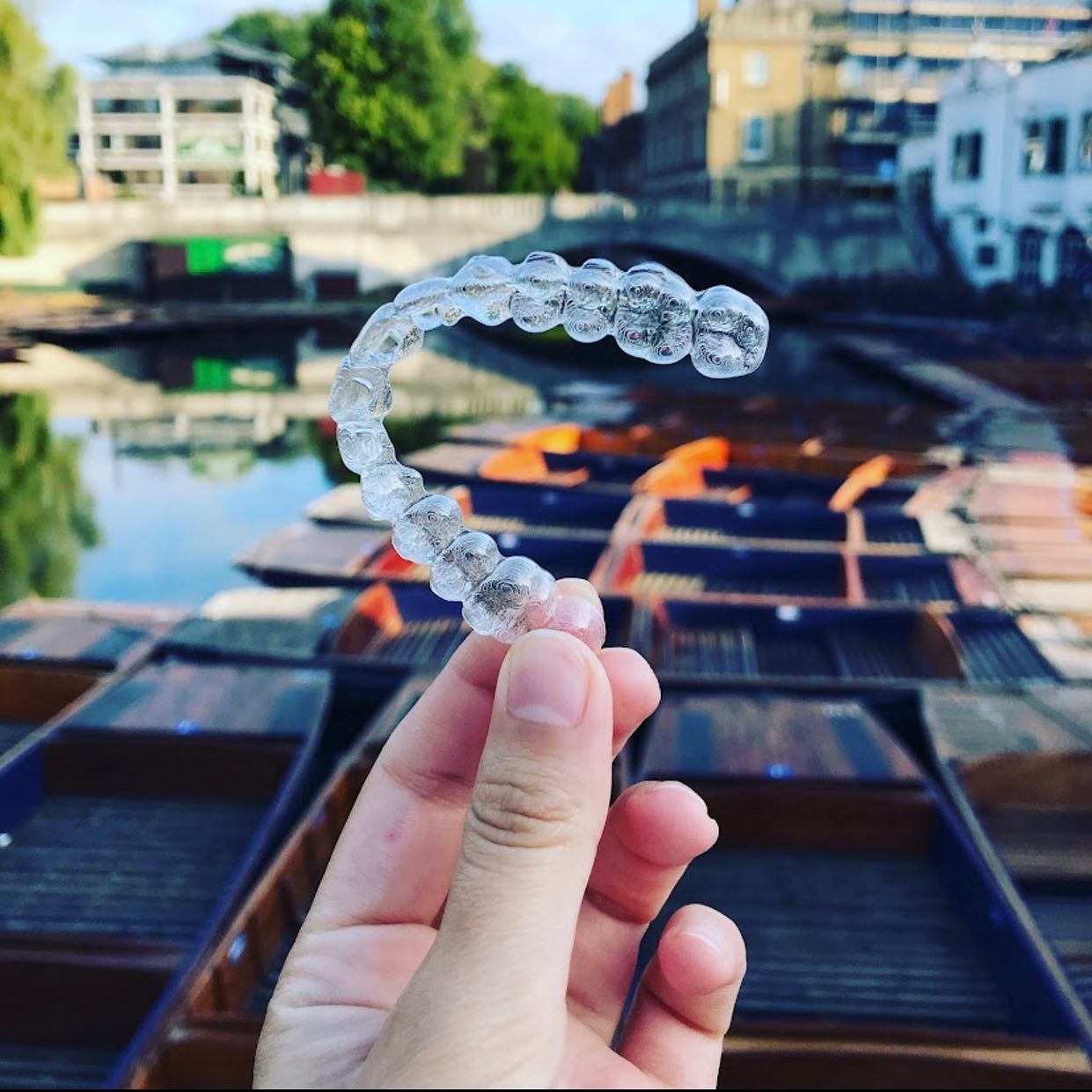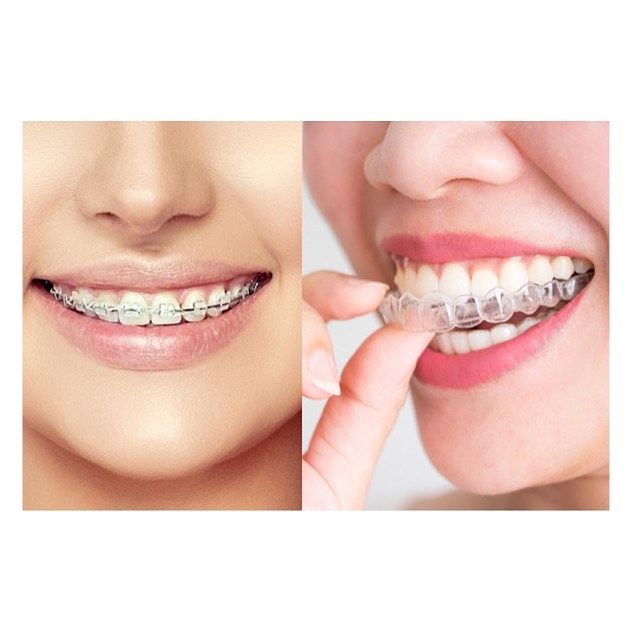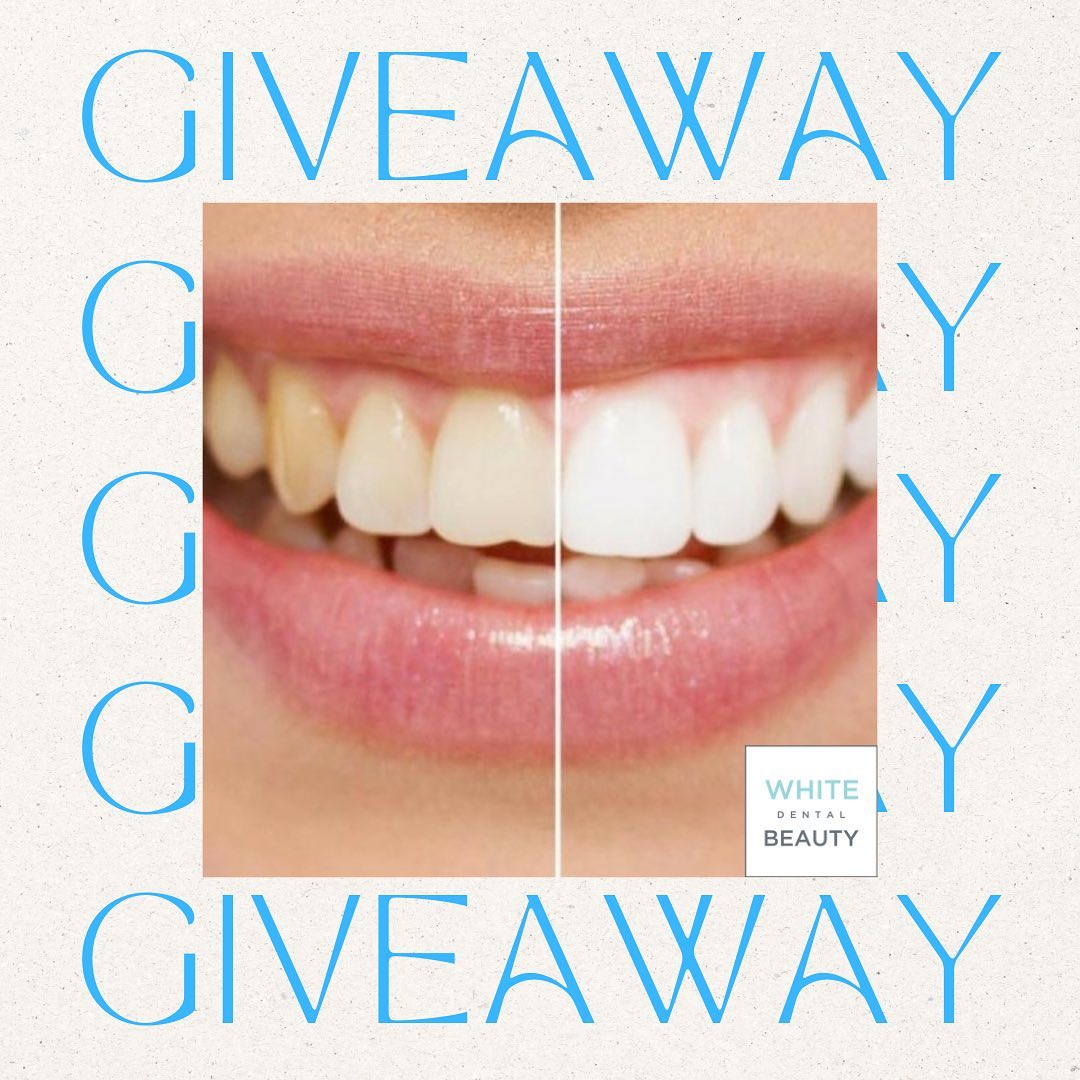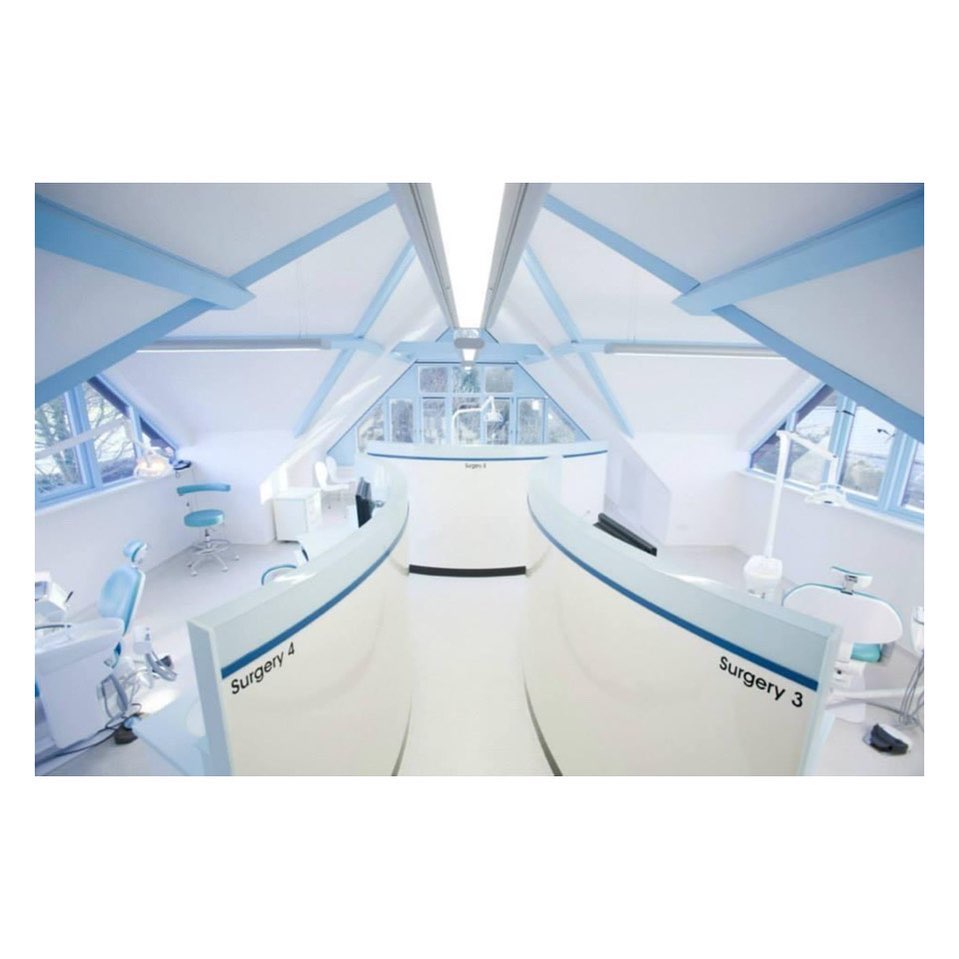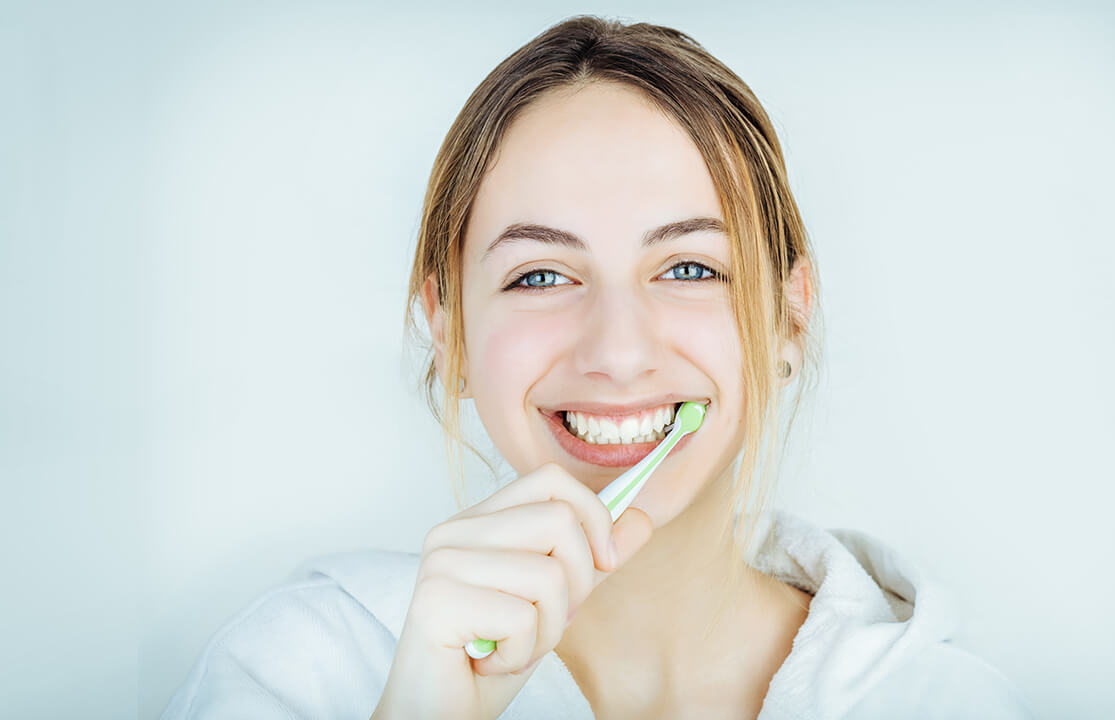
Caring for your teeth and braces
Good oral hygiene is vital to ensure your orthodontic treatment runs smoothly and you get those all important results. Problems that could potentially damage your teeth long-term are usually caused from not brushing your teeth correctly. With these top tips from our Specialist Orthodontists, you’ll be flashing your smile in no time.
Cleaning your teeth with braces
If you have a removable brace, like Invisalign® or a retainer, you can take it out to clean your teeth. A fixed ceramic or metal brace can easily trap food and contribute to plaque build up, which increases the risk of possible damage to your teeth and the health of the gums.
We recommend that you spend five minutes brushing your teeth with a good brushing technique. Do this three times a day; after breakfast, lunch, and dinner. Use a timer or play one or two of your favourite songs while cleaning your teeth to ensure you spend enough time on them.
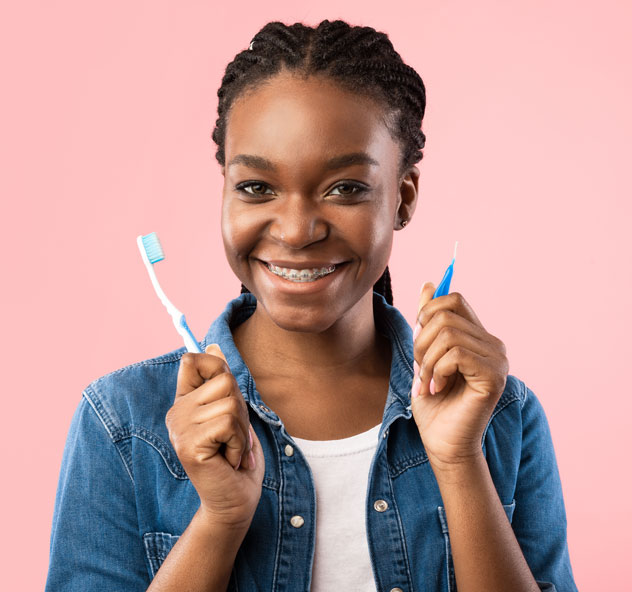
What to use for cleaning your teeth
The following items a recommended for a great clean:
- Manual or electric toothbrush - ideally soft bristle
- Fluoride toothpaste - most toothpaste contains fluoride
- Fluoride mouthwash - strengthens your teeth & prevents tooth decay
- Tepe brushes - for cleaning behind the wire and down the sides of the brackets
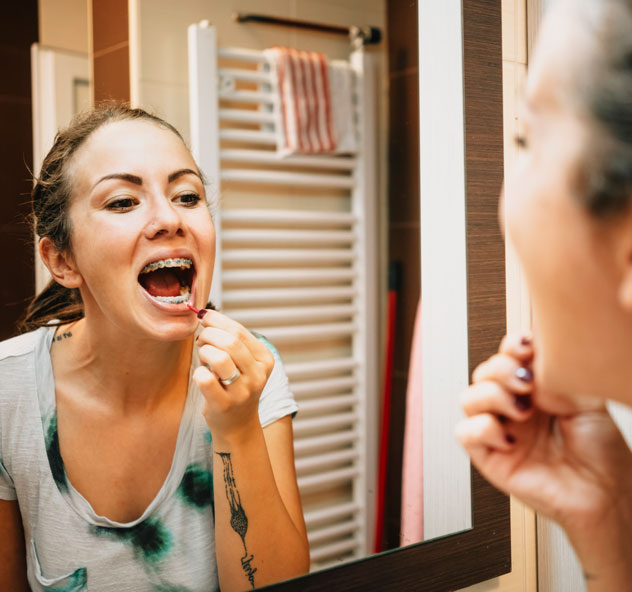
Three steps to a great brushing technique
- Brush the front surface
Starting at your last back tooth, work your way from one side of your mouth to the other, cleaning the top part of the brace. Hold your brush at a 45⁰ angle and brush in a small circular motion, ensuring that you are cleaning the tooth’s surface. Now clean underneath the brackets using the same technique. If you started with your top teeth, clean the lower teeth in the same way and make sure to brush your gums after cleaning your teeth. - Brush the biting surface
Clean the biting surface of your teeth in small, circular motions. - Brush the back surface
Clean the back surface of your teeth in small, circular motions.
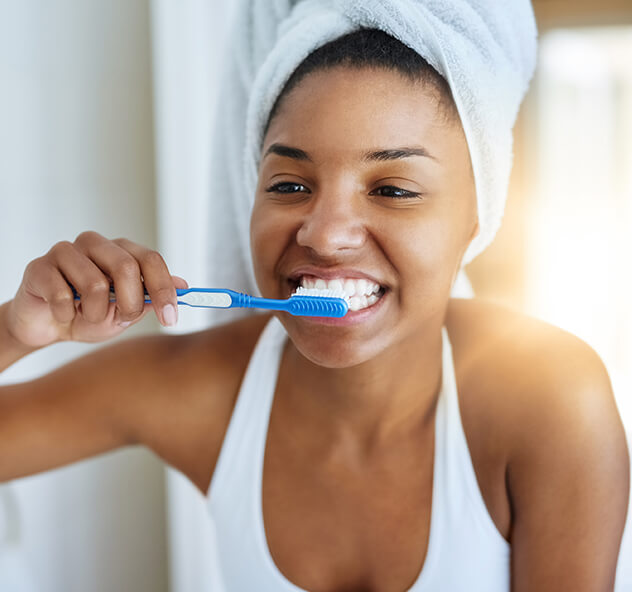
Brushing Top Tips
- Take your time: there is no quick way of effectively cleaning around your fixed brace.
- Use tepes: After tooth brushing and before bed, use the tepe brush behind the wire, gently cleaning each side of the bracket.
- Use an electric toothbrush: Use the same technique as outlined above, but rather than moving the brush in small circles hold the brush still in position for a few seconds before moving onto the next tooth.The oscillating head of the electric toothbrush will do the work for you.
- Use fluoride mouthwash: After cleaning your teeth and before going to bed use fluoride mouthwash. Follow the instructions for use and DO NOT rinse after. Mouthwash is not a substitute for cleaning teeth!
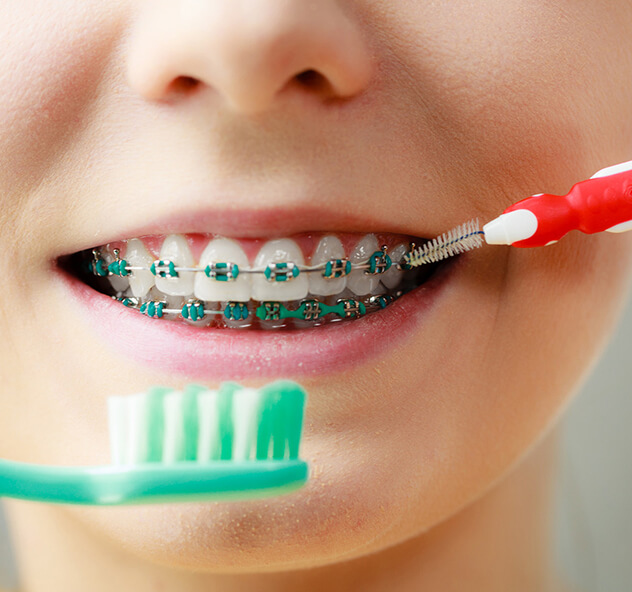
Don’t put your teeth at risk
Not cleaning your teeth properly while wearing braces can cause plaque to build up. This can lead to a number of problems, including:
Decalcification
This is a white area on a tooth where the enamel has been scarred. Patients most often see decalcification after fixed braces come off, in areas around where the brackets were and along the gum line.Some people think that braces cause decalcification scars, this is NOT the case. Decalcification occurs due to poor cleaning, allowing the acid in the plaque to sit on the enamel long enough that it starts leaching out calcium from the enamel - that is why it is called ‘decalcification’. The calcium is what makes the enamel strong, and without it, the enamel becomes soft. Decalcification is the first stage of a cavity, when the acid has not yet reached the inner layers of the tooth, but has weakened the outer layer.
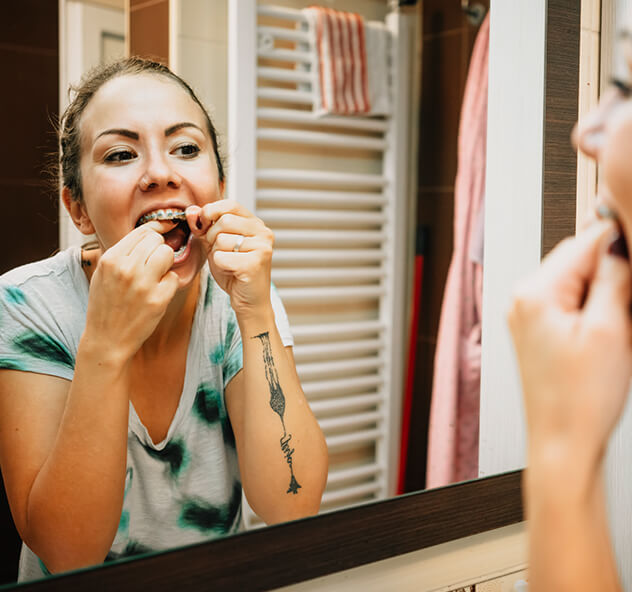
Other issues as the result of poor oral hygiene
Cavities
Plaque bacteria turn sugar into acid. Poor tooth brushing and/or excessive and frequent intake of sugar will cause decay (cavities). These cavities, if left untreated, can become very painful and leave holes in the teeth. The decayed area of the tooth will generally need to be removed and filled by the dentist.
Gingivitis
Plaque can cause gingivitis, a condition whereby the gums become inflamed and may bleed. This typically happens because the acid produced by the plaque irritates the gums, causing an inflammatory response. Gums will return to normal with good tooth brushing.
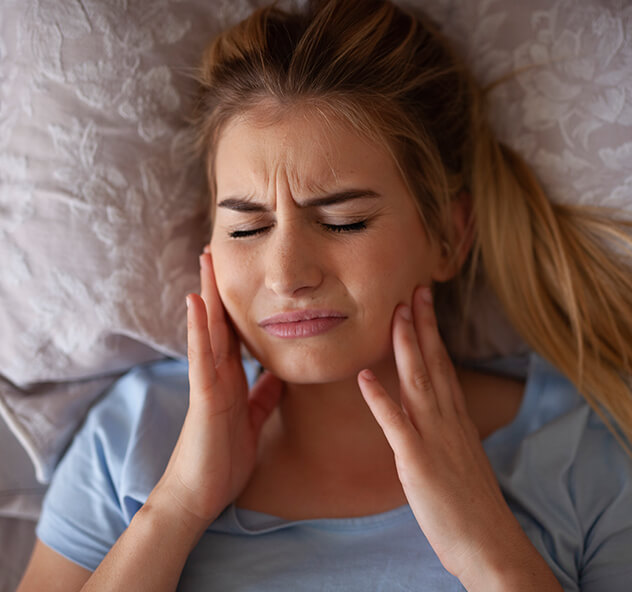
How will I know that my teeth are clean?
At each orthodontic appointment, our Specialist Orthodontist will assess your oral hygiene. If it could improve, we will inform you and show you the problem in the mirror. We will go through good tooth brushing techniques with you.
If tooth brushing is very poor, we may ask you to clean your teeth whilst in the dental chair and will advise your dentist that you are struggling with brushing your teeth.
If oral hygiene is persistently poor and we believe that teeth are at risk of damage, we may stop treatment and remove your brace, even if treatment is not complete. Dental health is very important to us and we hope it is to you too.
If you require more information on how to ensure your oral health is at an optimum during your orthodontic treatment, please contact our friendly team today.
Contact us

